Abstracts
Keynote: The Tech Revolution: Transformational Changes and Challenges for the Automotive Industry
9:00–9:30 a.m.
The automobile is going through a major change in technology. And it's not just electric. The major changes include: software-defined vehicles, digital twins, zonal and centralized computing, ethernet in-car connectivity, adapting to the use of AI, and many more. New entrants are redefining how cars are made. Legacy OEMs have to find new ways to succeed in the face of rising global competition and high battery material costs. While new entrants have the advantage of a clean slate start, legacy OEMs have robust processes that have evolved over decades. But, one thing is clear, everyone has to adapt to this major disruption to be successful.
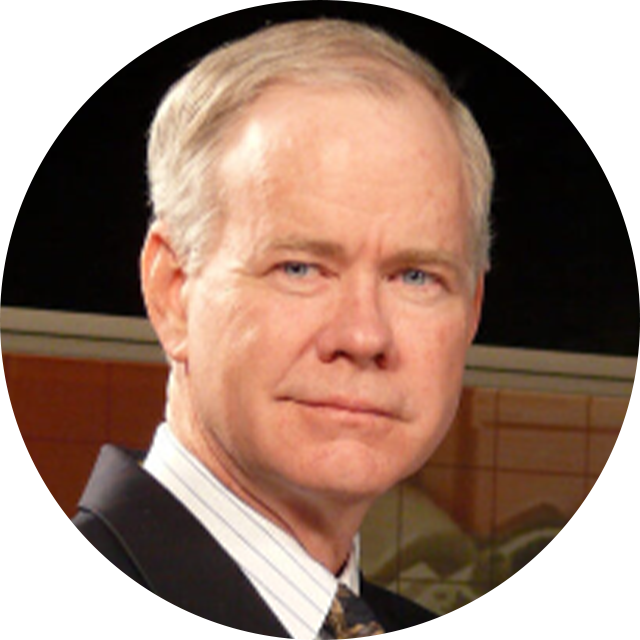
John McElroy, Blue Sky Productions
Keynote: Enabling MATLAB and Simulink for Use in the Cloud
9:30–10:00 a.m.
As automotive platforms advance, the use of cloud and other technologies is becoming central to enabling you to remain competitive. Learn about the 15-year journey of bringing MATLAB® and Simulink® to the cloud and the discoveries made along the way. See a high-level overview of the product capabilities and roadmap so that you can feel confident that these tools are ready for you when you start your cloud journey.
Advancing Energy Analysis at GM with the New VERDE Toolchain
10:30–11:00 a.m.
General Motors has a long partnership with MathWorks, utilizing MATLAB® and Simulink® to develop proprietary tools for vehicle efficiency and longitudinal performance analysis. Ever-increasing reliance on virtual methods in all phases of product development required improvements to simulation tool efficiency, speed, and fidelity. We also acknowledged the benefits of increased collaboration through modular tool design, democratization, and co-simulation. Recognition of these needs drove a complete redesign of core tool structure and interfaces. The newly introduced VERDE (Vehicle Energy and Range Development Environment) toolchain builds on MATLAB and Simulink with App Designer and Simscape™ to address these needs. In this presentation, hear about VERDE core capabilities, new interface, unique features, and integrated pre- and post-processing that enable General Motors to develop conventional, BEV, and hybrid architectures for leading-edge fuel economy, range, performance, and global CO2/GHG strategy.
Optimizing Calibration Values of Electrified Powertrains with Machine Learning
11:00–11:30 a.m.
The automotive industry is increasingly turning to computer-aided engineering (CAE) tools to streamline product development and reduce time and cost. However, the recent advancements in electric and hybrid electric vehicles have introduced complexities to the product development process. Electrified powertrains incorporate intricate electro-mechanical systems such as internal combustion engines, motors, and batteries, leading to a multitude of operating combinations that are controlled by a set of predetermined calibration variables. The calibration variables can be adjusted to optimize various attributes of the vehicles, including fuel economy and performance. With a vast calibration set available, it is impractical to manually determine the global optimum calibration based on empirical knowledge and experience. This project aims to address the challenge by reframing the calibration development as a mathematical optimization problem to identify the global optimum calibration for a defined objective function. Using Simulink®, we have developed high-fidelity system-level vehicle models for Ford’s xEVs and utilized them to optimize powertrain calibrations. Leveraging genetic algorithms, a subset of evolutionary machine learning algorithms, we have optimized the calibration to meet specific objectives. Given the high dimensionality of the problem, many simulations (10,000+) must be executed. This necessitates the use of a computing cluster with 512 parallel simulations to complete the studies in a feasible time frame. The project utilized MATLAB®, Simulink, Parallel Computing Toolbox™, and MDCS licenses, which facilitated the scalability of the problem, enabling us to complete the simulations in 100+ hours (which would otherwise take 30,000+ hours). Upon completion of the study, data analytics techniques are employed to analyze the large data set, and the best calibrations are provided to calibration engineers for further analysis and implementation in vehicles.
Best Practices for Building Large Models from Components to Complex Systems
11:30 a.m.–12:00 p.m.
Model-Based Design processes are well established and have been in use for over two decades. With increased complexity of components, systems, and their interaction with other systems and infrastructure, model sizes are increasing, and implementation challenges are growing. In this talk, get an overview of best practices for dealing with these challenges:
- MATLAB Projects: Automate routine tasks, mistake-proof parts of your work, and integrate source control into MATLAB® and Simulink®.
- Components: Optimize Simulink componentization for simulation performance, testability, parallel development, and code generation.
- Interfaces: Define interfaces between components to speed up development and improve performance and code generation.
- Data Types and Parameters: Manage storage for private and shared data types, parameters, and configuration sets.
- Variants: Control design alternatives for data, components, and products via variants.
- Performance: Improve initialization and simulation performance with built-in tools in Simulink.
Women in Tech: Driving Your Career and Navigating the Technology Revolution in Automotive
1:15–2:05 p.m.
Open to all attendees, this session aims to inspire and equip professionals with the insights and strategies needed to thrive in leadership roles amidst the fast-evolving automotive technology landscape. Women leaders from the automotive industry will share their journeys of navigating careers, embracing change, overcoming challenges, and seizing opportunities in the technology-driven automotive sector. Gain valuable knowledge, foster connections, and empower yourself to shape the future of the automotive industry with confidence and vision.
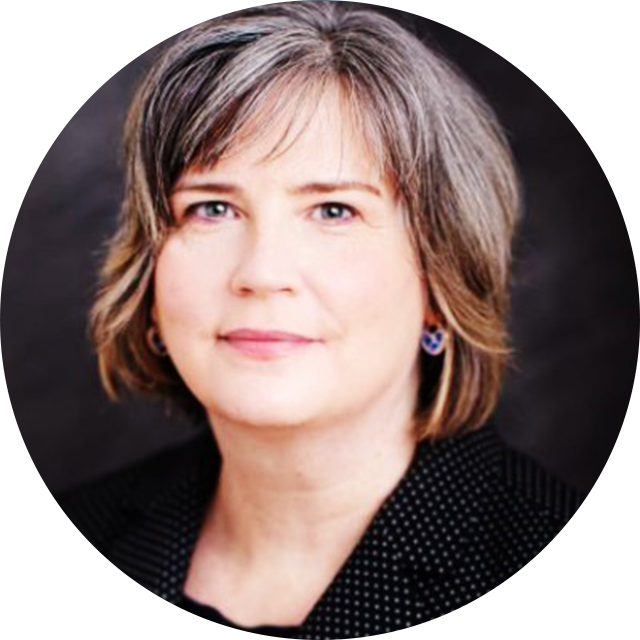
Mary Neaton, Brunswick Boat Group
Software-Defined Vehicle Realization with Model-Based Design and FEV’s Gateway
2:05–2:30 p.m.
Emerging technologies such as artificial intelligence (AI), connected and autonomous vehicles (CAV), and electrification motivate the need for a new EE architecture that can handle the complexity of these systems. SDVs are key enablers for these technologies in the automotive industry. However, SDVs come with challenges including legacy software adaptation and high-performance computer (HPC) testing. FEV can help with overcoming these two specific challenges by utilizing MathWorks Model-Based Design tools and FEV’s Gateway. Hear about two use cases that highlight the effectiveness of FEV’s approach towards a rapid realization of SDV software development and testing. The first use case illustrates migrating a traditional legacy E-drive torque path function to a service-oriented architecture (SOA) for SDVs. The second use case demonstrates the integration of an SDV HPC with an existing EE architecture using FEV’s Gateway for rapid integration and testing.
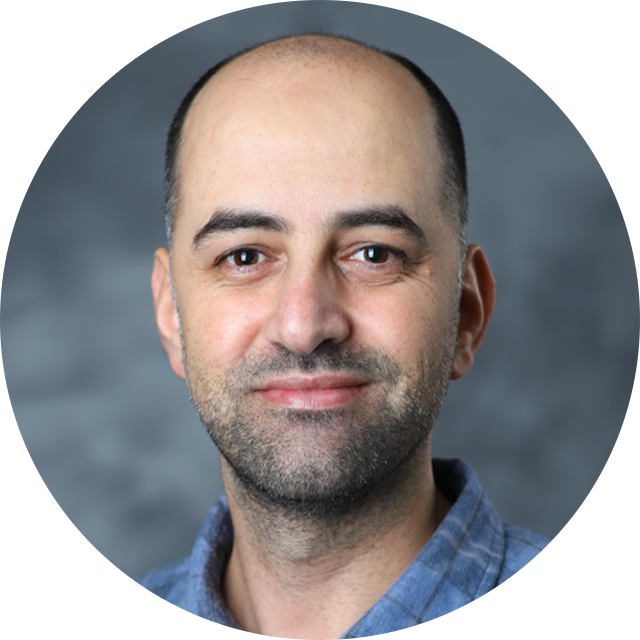
Dr. Hamzeh Alzubi, FEV North America
Using Bus Element Ports and MATLAB Functions in Simulink for Algorithm Development
2:30–2:55 p.m.
Simulink® algorithm designs are traditionally constructed using a top- down approach of subsystems to provide hierarchy, with bottom-level block diagrams consisting of basic blocks to calculate the outputs of subsystems from inputs. In this presentation, see the advantages of using this same top-down approach, but using MATLAB® Function blocks to calculate the outputs of subsystems from inputs. Discover the ease and advantages of using bus element ports over traditional bus hierarchy designs. And last, explore the use of scripts to help the user provide a Simulink IDE for rapid algorithm development. Together, these three development techniques allow for clean and simple differencing and merging, compact representations of complex logic, consistent modeling standards across large models, and streamlined management of model data.
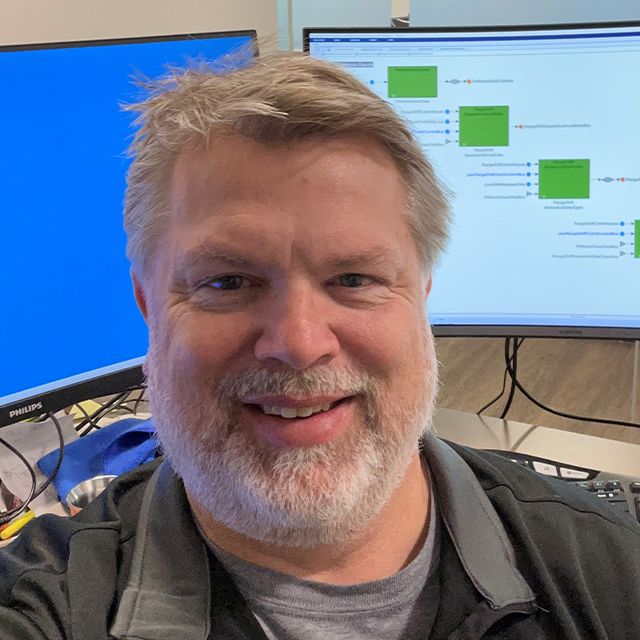
Jeff Runde, Allison Transmission
SIL for E-Drive Systems for Virtual Calibration and Development
2:30–2:55 p.m.
In the push to reduce/eliminate physical testing and to perform virtual calibration, it is increasingly important to have accurate and high-fidelity models that replicate the performance of hardware and software for the electric drive system (including the motor and inverter). Fast execution speed of these models is critical if they are to be widely used to replace physical testing and to perform rapid prototyping of controls development in a continuous integration/development manner. Historically, these two requirements have been in conflict with each other in the electric drive modeling space; where high frequency inverter switching and electrical simulations require small model time steps. Utilizing a flexible modeling approach in conjunction with Simscape™, electric drive hardware models can be simulated alongside full software and calibrations, running as a virtual ECU (VECU) to create a true “virtual dyno” achieving close to real time simulations on a standard laptop computer. These models have been validated using physical data, ensuring their accuracy and reliability. By utilizing these models, it is possible to deliver a calibrated electric drive system prior to physical characterization.
Migration of a Monolithic Algorithm to Service-Oriented Architecture (SOA)
3:50–4:15 p.m.
Service-oriented architectures have been around for a while. In this presentation, see how to break apart a monolithic algorithm into services that can be reused. Follow an explanation of guiding principles and examples of breaking apart a large algorithm into service-based components using System Composer™ as a method to be refactored, and then see how to reuse the test from the large component to the newly refactored composition of SOA components. Finally, learn to generate C++ code (via Adaptive AUTOSAR®) across the new composition of SOA-based components.
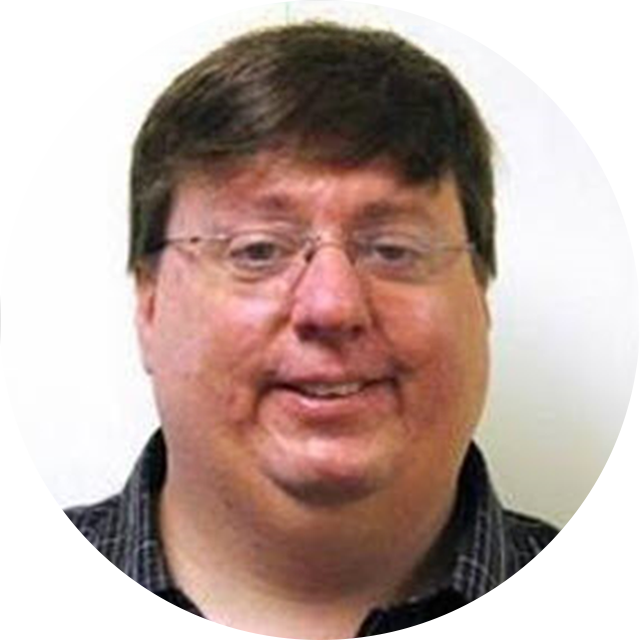
Mark Danielsen, MathWorks
How Cloud-Based Virtual Vehicles Can Help You Build Your Next-Gen Software
4:15–4:40 p.m.
Can you optimize new software algorithms without on-vehicle testing time? How much can we minimize the need for HIL benches and vehicle tests to release new software components? With the rapid rise in the number of software components, introduction of complex E/E architectures, and deployment using over-the-air updates, the future of automotive innovation will be highly software-defined. This future of evergreen software releases demands processes that can decouple software from hardware to ensure we are not constrained by the need for vehicle time and HIL bench tests during development. Virtual vehicle simulations play a key part in helping us "shift-left" away from such hardware dependencies; and when deploying effectively on the cloud, can help you scale up your analysis and testing very quickly. In this talk, see how cloud-based simulations can help you build a new "sport plus" mode for your EV, with faster 0 to 60 mph (100 kph) times. Increasing the power consumption will have effects on the thermal system, and on the EV range—both of which need to be quantified. Using a virtual vehicle model, see how to:
- Quickly change parameters (such as battery current discharge) and quantify the effects of these changes at the component and system level (battery temperature, EV range)
- Scale up your simulation runs by deploying Simulink® on the cloud
- Combine your fleet data together with virtual models to gain insights such as expected EV range change
- Extract vehicle and environment data to test your production intent software stacks on virtual ECUs and HIL benches
- Combine virtual vehicles with virtual ECU emulators (the future of virtual validation)
Sameer Muckatira, MathWorks
Development of a Real-Time Thermal System Model for Electric Class 8 Trucks
2:05–2:30 p.m.
The project involves creating a real-time compatible thermal system model for Navistar electric Class 8 trucks. The model is primarily built using Simscape Fluids™ submodels. The workflow involves creating a variable time step model initially and later converting the model to fixed time step to prepare deployment on real-time platform dSpace® SCALEXIO. The model involves coolant hydraulics representation for powertrain (motor, inverter, DC/DC converter), brake compressor, battery chiller, and flow routing valves. It also includes separate refrigerant loops for subambient battery cooling and cabin HVAC. Execution of the model on a real-time platform is demonstrated. Correlation of hydraulic model performance and refrigerant model with detailed 1D model used for component designs is discussed. A workflow to bridge the gap between complex models for component design and simplified models for faster solver performance on a real-time platform while maintaining the necessary fidelity is demonstrated.

Vikrant Chiddarwar, Navistar
4 Advantages of Making Esoteric HIL Testing Accessible
2:55–3:20 p.m.
Nikola is a Class 8 truck OEM with battery and hydrogen fuel cell electric trucks in market. These products have multiple Nikola ECUs that communicate with components, supplier ECUs, and among themselves. An elaborate setup was created for efficiently testing each ECU in an HIL setup with the ability to test different calibrations, and compare and test software while maintaining ease of use. We leveraged Speedgoat®, MATLAB®, Simulink® and App Designer to create a UI that makes the HIL bench(es) accessible to any engineer (controls, calibration, testing etc.). The setup can flash software and invoke a real-time application that the user can interact with for their tests. The GUI emulates a truck on their computers where they can test each ECU in isolation or in unison with other models with only a few clicks, thus reducing resources spent on dyno and field tests—they can develop, test, fail fast, and retry. This allows Nikola engineers to test different scenarios without recompiling, rebuilding, and redeploying the model or concocting different test harnesses. Users of this application can override multiple model parameters, signals to the ECU, and component calibrations to not only test a software but compare different software versions. Previous software versions are available to the user via a dropdown. Four ways the setup is helping Nikola stay agile are:
- Reducing the time between software release, model development, and testing
- Reducing resources required for dyno/field tests
- Increasing accessibility of tools company wide
- Comparing multiple software/calibrations efficiently
In this session, discover:
- How MATLAB and Simulink products have helped Nikola build this setup
- The process pipeline after each software release: harness setup, updating models to interact with Speedgoat, etc.
- The model components and other non-hardware ECU models that interact with the real-time output
- How to decrease variable costs by making HIL accessible
A Unified Data Analytics Framework for Time-Series Data
2:55–3:20 p.m.
In the automotive industry today, vehicle data is collected and archived from a large, diverse group of vehicles and test cells for a variety of purposes. This data is usually time-series data with varying sampling rates. Often the teams collecting this data utilize different acquisition methods and file formats and have different reporting requirements. Furthermore, the data identifiers, units, and the sampling rates themselves are often subject to change. For this reason, a need for a unified data analytics platform that provides a common foundation that satisfies the requirements of multiple departments was identified. Dashboard2 is an in-house tool that provides a strict separation between the foundational code that processes the input data and the analysis code that generates interactive reports within MATLAB®. It also provides interfaces to remote data sources and quick query capabilities that allow engineers to access specific data sets of interest in a generic and efficient manner. MATLAB and Simulink® products such as Parallel Computing Toolbox™, MATLAB Compiler™, Database Toolbox™, Vehicle Network Toolbox™, as well as MATLAB tables, timetables, and built-in interfaces to Java, were instrumental in the development of Dashboard2. The same platform is designed to support interactive and automated data analysis on both Linux® and Windows®. Being able to frequently distribute updates and deliver a compiled, distributable solution allows engineers to work more efficiently and focus on data analysis function development rather than file processing code, with the assurance that there will be no need to rewrite the analysis function even if the data acquisition sources, signal units, or file formats change.

Sundeep Tuteja, PACCAR
A New Method for Battery Characterization
3:50–4:15 p.m.
Discover a new way to find battery model parameters from characterization experiments. You can use Model-Based Calibration Toolbox™, a tool traditionally used for conventional engine mapping, to estimate the lookup tables that describe the battery behavior. The simple structure of the battery equivalent circuit allows the toolbox to perform the optimizations using symbolic expressions, resulting in an efficient computational scheme. In addition, vectorization and parallel computing take advantage of the independence among most of the processes involved, enabling a complete fingerprinting of a battery across SOC and temperature in a matter of minutes on a common laptop computer. This talk may be useful to battery engineers and calibration engineers with experience in ICE calibration with an interest in electrification.
Deep Learning–Based Reduced Order Models for Electric Motors
4:15–4:40 p.m.
Full vehicle system modeling is used in applications such as electric vehicles and energy systems and plays a pivotal role in understanding system behavior, system degradation, and maximizing system utilization. The behavior of these systems is dictated by multi-physics complex interactions that are well suited for finite-element simulations, but modeling system behavior and system response is computationally intensive and requires high-performance computing resources. Additionally, such models cannot be deployed to hardware (HIL/PIL) to predict real-time system response. Another alternative is reduced order modeling using curve fitting and system identification, which makes subsystem models computationally feasible. However, in many critical systems, this approach is not preferred as these surrogate models are less accurate and do not represent the full spectrum of component behavior. With deep learning, we can now rely on data to develop small footprint, detailed models of components without approaching the problem from first principles. In this presentation, walk through the development of a deep learning– based reduced order model (ROM) for a permanent magnet synchronous motor (PMSM), a popular component for electric vehicles and future green transportation.

Shyam Keshavmurthy, MathWorks
Developing Simulink Co-Simulation with SUMO and CARLA
2:05–2:30 p.m.
Ford ADAS Toolbox is a user-friendly toolbox developed for Ford by MathWorks Consulting Services. The toolbox is a plug-in for Simulink® to use CARLA and SUMO (open source software for autonomous driving and traffic simulation). A creative implementation of the plug-in enables the user to launch CARLA/SUMO server, clients, and co-simulation directly from Simulink without the need to write any code. It allows the user to control actors (vehicles, pedestrians, etc.); access traffic, map, and route info; and access modeling sensors (camera, radar, lidar, etc.) using Simulink block diagrams. It supports code generation and can be installed in both Windows® and Linux® environments. It also supports MATLAB® functions, Simulink blocks, and deployment via MATLAB Coder™, Simulink Coder™, and Embedded Coder®. The toolbox has been applied by major projects, brought significant benefits, and proved to be very effective.

Fangjun Jiang, Ford
Scene Sync: Bridging Real-World Scenarios with Virtual Environments for ADAS Development
2:30–2:55 p.m.
This presentation delves into the meticulous process of crafting real-world scenarios through the utilization of vehicle test data logs, subsequently employing them to simulate scenarios within a virtual environment. The workflow showcased integrates HD maps and recorded sensor data to generate driving scenarios, structured into key stages including importing HD maps and vehicle trajectories into RoadRunner via MATLAB programmatically, utilizing gRPC APIs for data extraction, and ensuring interoperability with IPG CarMaker through ASAM OpenScenario Export. Aimed at fostering a sophisticated virtual environment, this workflow advances early control algorithm design and testing, particularly concerning Advanced Driver Assistance Systems (ADAS) features. Challenges encountered will be addressed, and potential future applications of the workflow will be explored, emphasizing its pivotal role in accelerating the development of automated driving applications.

Amit Sharma, Aptiv
Scenario Simulation for Automated Driving with MATLAB, Simulink, and RoadRunner
2:55–3:20 p.m.
Hear an overview of workflows used to develop scenes and scenarios for automated driving applications, including designing scenes and scenarios interoperable with common driving simulations tools, building scenarios from recorded sensor data, and simulating driving applications for early design and test. See how these workflows are applied to a case study featuring a Euro NCAP test suite for an autonomous emergency braking application.
Electric Vehicle Chassis Modeling and Control Applications
3:50–4:15 p.m.
Chassis development is a critical part of the design, functionality, and performance of automobiles. Development of the chassis ranges from the mechanical design of suspension hardpoints all the way to electrical design of control algorithms like electronic stability control and emergency braking. As new technologies such as electric vehicles are introduced, new opportunities like torque vectoring and active suspensions arise to further improve chassis response. In this talk, discover how you can use MATLAB® and Simulink® to accelerate chassis development and tackle the challenges that new technologies provide.
Automated Driving in the Urban Environment with RoadRunner Scenario
4:15–4:40 p.m.
Learn how to simulate automated driving in the urban environment with RoadRunner.
- Create a complex urban scene consisting of intersections with traffic lights.
- Generate a V2X Map from the RoadRunner HD map and a V2X SPaT (signal phase and timing) from the RoadRunner traffic signalization.
- Implement a mission planner to search the shortest path for a given start and destination position using an A-star planner.
- Design a behavioral planner to follow traffic lights in the urban intersections using V2X Map and SPaT.
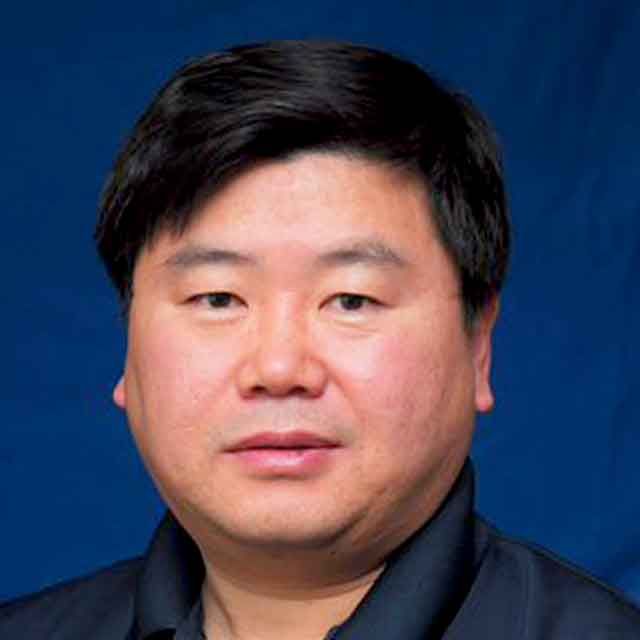
Seo-Wook Park, MathWorks
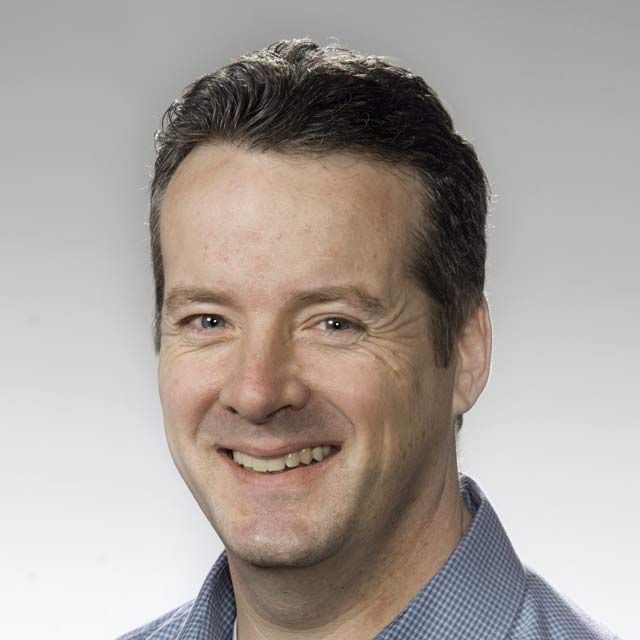
Loren Dean
MathWorks
Loren Dean is a senior director in the MATLAB development organization. He has responsibility for the MATLAB desktop and various product areas, including parallel computing, controls, and test and measurement. He is also responsible for the Online Products Department, which covers the MathWorks cloud, MATLAB Online, MATLAB Mobile, MathWorks Accounts, cloud platform integrations, help/support/community, online learning, product installation and licensing, and general cloud infrastructure. Loren has been with MathWorks since 1995. Prior to joining MathWorks, he worked for AlliedSignal Aerospace performing systems analysis and integration for aircraft engines, with extensive use of MATLAB and Simulink. Loren has a B.S. and an M.S. in aeronautical engineering from Purdue University and an M.B.A. from Northeastern University.

Leslie Mehrez
MathWorks
Leslie Mehrez is responsible for technical marketing of online products, bringing MATLAB and Simulink products to cloud, web, and mobile platforms. She has been at MathWorks for over 20 years. Leslie holds a B.S.E.E. from Lafayette College and an M.B.A. from Babson College.
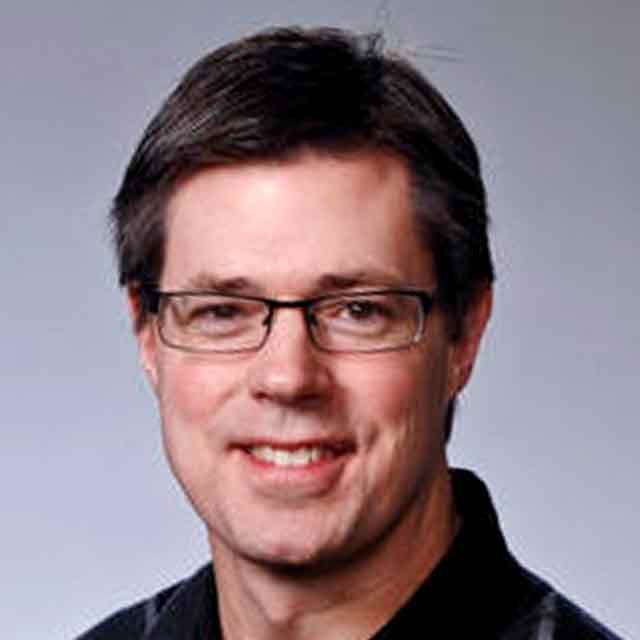
Brad Hieb
MathWorks
Brad Hieb focuses on the development and use of large-scale models for automotive system development at MathWorks. He also has over 14 years of embedded systems design experience at Ford Motor Company, including advanced engine controls development, Formula 1 powertrain and vehicle controls, and vehicle dynamics simulation activities. Brad holds an M.S. in electrical engineering.

Erick Saldana Sanvicente
MathWorks
Erick Saldana Sanvicente works on updating and improving the best practices for large-scale modeling at MathWorks, and has 10 years of experience working with embedded systems based on Model-Based Design processes at different automotive OEMs and Tier 1 suppliers. Erick holds a B.Sc. in mechatronics.
Sameer Muckatira
MathWorks
Sameer Muckatira helps automotive engineers adopt Simulink and Model-Based Design. His focus is on the practical use of cloud technologies for automotive development, with an emphasis on deploying Simulink in the cloud, linking simulation studies with big data, and scaling up testing and code generation through continuous integration. He joined MathWorks in 2019, bringing real-world automotive experience from 3 years as a control systems lead for Cummins diesel engines. Sameer has an M.S. in mechanical engineering from the University of Illinois.

Shyam Keshavmurthy
MathWorks
Shyam Keshavmurthy is a senior application engineer at MathWorks, where he helps customers digitally transform their engineering and manufacturing systems through AI solutions. He has over 20 years of experience in applying and operationalizing AI solutions to engineering and manufacturing problems. Shyam has a Ph.D. in nuclear and radiological engineering and graduated from Harvard Business Analytics Program.

Jason Rodgers
MathWorks
Jason Rodgers is a senior application engineer at MathWorks focusing on physical modeling in the automotive space. Prior to MathWorks, he spent five years at Toyota R&D in the Model-Based Design Group. He specialized in powertrain modeling and using control development along with various optimization techniques to develop new powertrain systems. Jason earned a B.S.M.E. and an M.S.C. from the University of Michigan.

Kevin Oshiro
MathWorks
Kevin Oshiro is a principal application engineer who focuses on developing virtual vehicle models and supervisory controllers, and supports customers using Powertrain Blockset, Vehicle Dynamics Blockset, and Simscape. Prior to joining MathWorks, Kevin worked at PACCAR for 10 years doing R&D Model-Based Design work on prototype electrified powertrains for medium and heavy-duty trucks. He holds a B.S.M.E. and B.S.E.E. from the Colorado School of Mines and an M.S.E.E. from the University of Washington.

Seo-Wook Park
MathWorks
Seo-Wook Park is a principal application engineer at MathWorks, focusing on automated driving and advanced driver assistance systems (ADAS). He has developed various automated driving applications such as ACC/AEB with sensor fusion, highway lane centering and change, truck platooning with V2V, and a scenario creation from recorded data with RoadRunner Scenario. One of his recent focus areas is to develop urban autonomy, including traffic light following at urban intersections using V2X technology. Before joining MathWorks, he worked in passive and active safety electronics development at Autoliv, Bosch, and Hyundai Autonet for over 20 years. Seo-Wook has a Ph.D. in robotics and control systems from the Korea Advanced Institute of Science and Technology (KAIST).
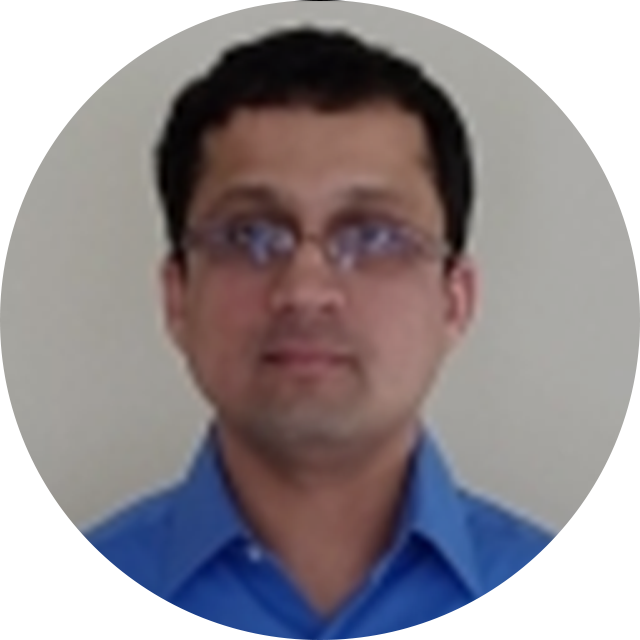
Anamitra Bhattacharyya
GM
Anamitra Bhattacharyya is a vehicle energy model co-simulation specialist at General Motors, leading GM energy analysis tool development and co-simulation tool and method development. Her other career highlights include technical specialist at Cummins Research and Technology, senior engineer at Cummins Turbo Technologies, and project engineer at FEV, Inc. Anamitra earned an M.S. in mechanical engineering from Wayne State University and a B.S. in mechanical engineering from VNIT India.

Shehan Haputhanthri
Ford
Shehan Haputhanthri joined the Cyber Calibration Department of Ford Motor Company in 2016 and has been working on various projects including controls development, electrified virtual vehicle (EVV) model development, and model-based calibration optimization (MBCO). Shehan received his B.Sc. from University of Peradeniya, Sri Lanka, and completed his M.Sc. and Ph.D. in mechanical engineering from Texas Tech University.

Indika Wijayasinghe
Ford
Indika Wijayasinghe is a model-based calibration and optimization engineer at Ford Motor Company since 2019. In this role, he works on algorithm development for optimization and data analytics to support model-based calibration efforts. Prior to joining Ford, the main focus of his research was on human-robot interactions and control strategy development for androids. Indika has a bachelor’s degree in electrical and electronic engineering from the University of Peradeniya, Sri Lanka, and a doctoral degree in applied mathematics from Texas Tech University.
Pratik Mahamuni
Nikola Corporation
Pratik Mahamuni is a vehicle performance integration lead engineer responsible for BEV HIL testing, MIL and HIL model development, and engineering tools development. He has worked with traditional automotive companies as a fuel-economy and performance simulation engineer for the past 9 years and decided to try Class 8 trucks as a new challenge. He has helped Stellantis win several awards for their Chrysler Pacifica particularly for achieving best-in-class highway fuel economy. Pratik has a bachelor's in mechanical engineering from India, Master of Science in mechanical engineering (automotive) from Michigan Tech and a Master of Business Administration (finance) from Oakland University (MI).
Avinash Divecha
Nikola Corporation
Avinash Divecha is a vehicle platform engineering manager, leading performance analysis and validation of the Nikola ECUs for the battery electric and fuel cell electric platforms. Before moving to Nikola as a model-in-the-loop simulation lead, Avinash worked for Cummins in Indiana, developing vehicle simulation and HIL models for ICE, hybrids, and electric vehicle models in the US, and later as a technical specialist developing closed-loop system models for controls verification and architecture selection in China. Avinash has a bachelor's degree in mechanical engineering from University of Mumbai and a master's degree from The Ohio State University.

Vikrant Chiddarwar
Navistar
Vikrant Chiddarwar works as a product engineer in the Research and Development Department at Navistar, Inc., supporting the development of tools for verification and validation of controls strategy for emerging vehicle technologies. Prior to this he was a VDDV engineer at General Motors and a product development engineer at both Siemens and Cummins. Mr. Chiddarwar holds a bachelor’s degree in mechanical engineering from Vishwakarma Institute of Technology and a master’s in mechanical engineering from Michigan Technological University. He is pursuing a master’s degree in numerical simulation in engineering at Technical University of Madrid. He is an active member of SAE and ASME and was awarded the 2022 Outstanding Young Engineer Award by the Engineering Society of Detroit.

Daniel Berry
GM
Daniel Berry is a technical specialist at General Motors working on electric drive simulation and virtual calibration. He has over 15 years of experience working on electric drive systems including hardware design, controls development, calibration, and simulation. He holds over 10 patents, many of which are reflected in production vehicles including the Chevy Volt, Chevy Bolt, and GM Ultium products. He holds bachelor’s and master’s degrees from Oakland University in mechanical and controls engineering, respectively.
Srinivas Naveen
GM
Srinivas Naveen is a product owner at General Motors working on system simulation and virtual vehicle integration. He has over 12 years of experience in HIL and system simulation with a background in control systems. He developed vehicle simulation for various use cases of algorithm development, software testing, and calibration development. Srinivas holds bachelor’s and master’s degrees from Indian Institute of Science in electrical engineering.

Alper Celikay
Our Next Energy
Alper Celikay is the battery management systems (BMS) algorithms and controls lead engineer at Our Next Energy (ONE). He is at the forefront of advancing BMS and spearheads the development of cutting-edge battery state estimation and controls algorithms including the Gemini dual chemistry battery, achieving a 600+ mile range. With a keen focus on continuous improvement, Alper worked on a fully scalable and modular battery state estimation algorithms for Aries I/II batteries. His expertise extends to data analysis, prognostics, and health management. Alper holds a master's in mechanical engineering from The Ohio State University, with a focus on nonlinear dynamics and modeling.

Sundeep Tuteja
PACCAR
Sundeep Tuteja works with the Engineering Solutions team at the PACCAR Technical Center and leads the development of an application that aims to streamline data analysis activities. He has held multiple positions at PACCAR for over 12 years. Prior to joining PACCAR, Sundeep worked with Belcan Engineering Group, where he was involved in engineering tool development for diesel engine data analytics, and Howard Hughes Medical Institute, where he developed software tools to assist with computational neuroscience research. Sundeep holds a master's degree in electrical engineering from North Carolina State University and a bachelor's degree in instrumentation engineering from University of Mumbai.

Fangjun Jiang
Ford
Fangjun Jiang is a technical expert at Ford Research and Advanced Engineering organization. His work is focused on modeling and simulation for ADAS. Previously, he worked on vehicle controls for hybrid/fuel cell vehicles and model-based development tools and processes. Jiang earned a Doctor of Engineering degree from Cleveland State University, Ohio, and an M.S. and B.S. from Tsinghua University, Beijing, China. He holds several US patents.
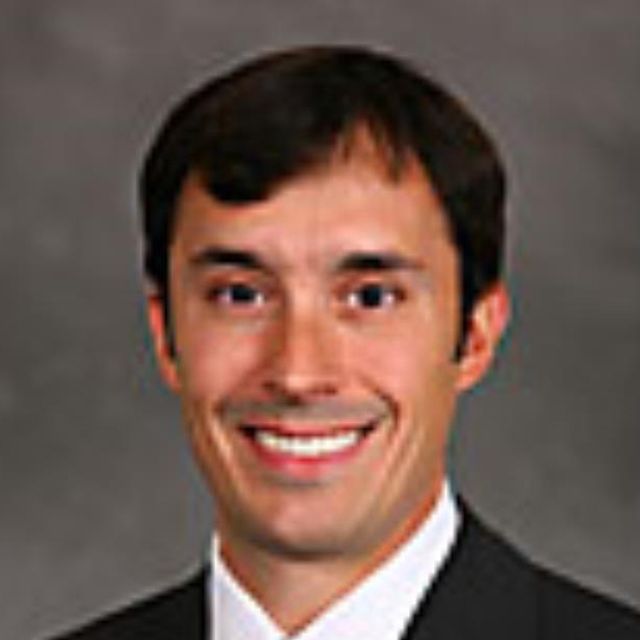
Nathan Wilmot
GM
Nathan Wilmot is the engineering manager of the Energy Model and Toolchain Development Team at General Motors, leading the team to advance GM’s virtual capability in the vehicle energy and performance domain. Nathan has 25+ years of automotive industry experience, and the majority of his career has focused on using or developing analytical tools to effectively integrate vehicle systems. Other career highlights include global vehicle performance owner, Vehicle Energy Integration; engineering manager, North America Mass Integration; lead development engineer, Cadillac ATS; and lead energy integration engineer, GM Full Size Truck Portfolio. Nathan earned an M.S. in mechanical engineering from the University of Michigan, a B.S. in mechanical engineering from Cornell University, and a B.A. in physics from Ithaca College.
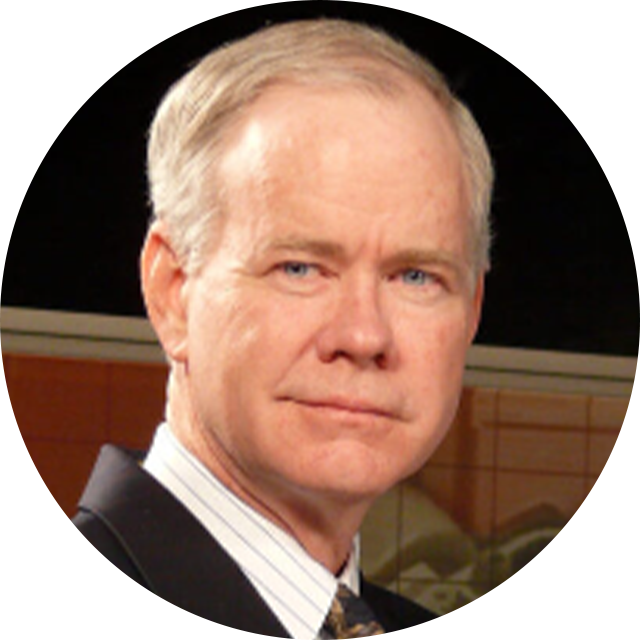
John McElroy
Blue Sky Productions
John McElroy is the president of Blue Sky Productions, Inc., and is an influential thought leader in the automotive industry. He is a journalist, lecturer, commentator and entrepreneur. He created “Autoline Daily,” the first industry webcast of industry news and analysis, and is the host of “Autoline This Week,” and co-host of “Autoline After Hours.” John broadcasts three radio segments daily on WWJ Newsradio 950, and writes a blog for Autoblog.com and a monthly op-ed article for Ward’s Auto World. As a journalist, his past experience includes five years as Detroit editor for Road & Track, the American correspondent for World Cars, and editorial director at Automotive Industries. John has appeared as an automotive expert on ABC World News Tonight, CBS News, and NBC Nightly News. He is often interviewed by CNN, NPR, and CBC in Canada, and speaks at automakers, suppliers, and industry organizations. He is a member of the jury of the North American Car and Truck of the Year, and has won numerous awards for editorial excellence.
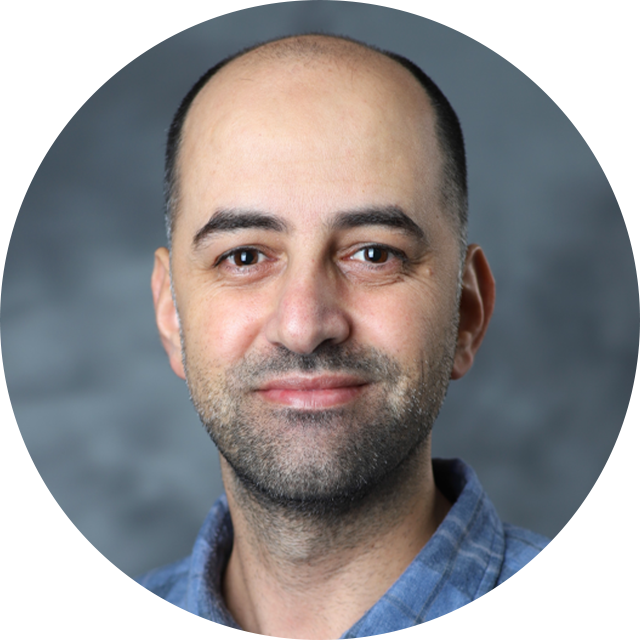
Dr. Hamzeh Alzubi
FEV North America
Dr. Hamzeh Alzubi is the intelligent mobility and software manager at FEV North America. He leads the design, development, and implementation of software programs and applications. He also provides expert opinions on software-defined vehicles, ADAS/AD, and connectivity-related topics. He has over 15 years of professional experience in software development for aerial and ground vehicles. Hamzeh received his Ph.D. from Oakland University. His Ph.D. research project was the first-place winner at the UAE Drones for Good competition in 2016.
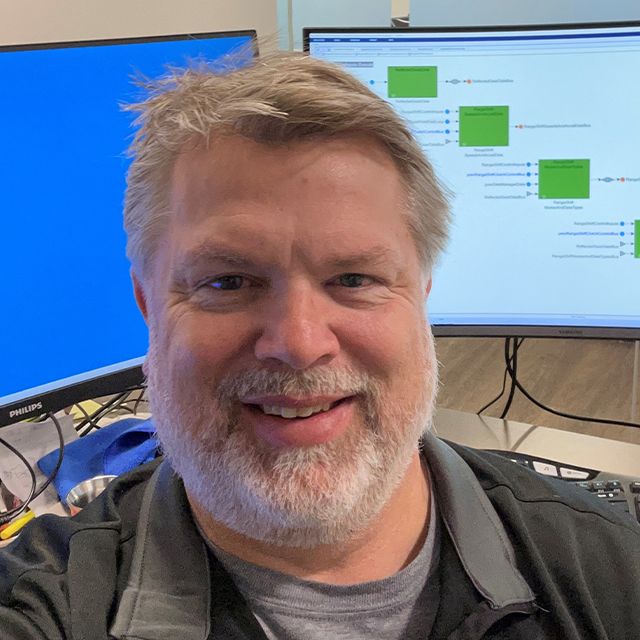
Jeff Runde
Allison Transmission
Jeff Runde is chief engineer of algorithms at Allison Transmission, where he has developed transmission control algorithms ranging from clutch-to-clutch shifting, E-drive motor control, and hybrid control algorithms. He holds an M.S.M.E. from MIT, specializing in control theory, a B.S.M.E. degree from Purdue University, and has over 50 patents.

Mark Danielsen
MathWorks
Mark Danielsen is a principal application engineer at MathWorks. His focus has been on supporting customers on Embedded Coder as applied to AUTOSAR and other production code generation targets. Prior to joining MathWorks in 2011, Mark worked for over 17 years on embedded controls in the automotive industry for OEMs, such as Chrysler and General Motors, and suppliers, such as American Axle and Manufacturing. Mark has a Bachelor of Science degree in electrical engineering from Western Michigan University.

Javier Gazzarri
MathWorks
Javier Gazzarri has worked as an application engineer at MathWorks for 10+ years, focusing on the use of simulation tools as an integral part of Model-Based Design. Before joining MathWorks, Javier worked on fuel cell modeling at the National Research Council of Canada in Vancouver, British Columbia. He has a bachelor’s degree in mechanical engineering from the University of Buenos Aires (Argentina) and master’s and Ph.D. degrees from the University of British Columbia (Canada).

Xiangchun Zhang
MathWorks
Xiangchun Zhang serves as an application engineer at MathWorks, specializing in battery modeling and battery management system (BMS) algorithm design. Prior to this role, he was a senior research manager at Dyson, where his focus was on the development of solid-state batteries. He brings 18 years of experience in Li-ion battery research and development to the field. Zhang holds B.S. and M.S. degrees in engineering from Tsinghua University, Beijing, China. He earned his Ph.D. in mechanical engineering from the University of Michigan, Ann Arbor, dedicating his research to the multiscale modeling of Li-ion cells, incorporating mechanics, heat generation, and electrochemical kinetics

Don Bradfield
MathWorks
Don Bradfield is a senior application engineer on the automated driving team at MathWorks, assisting customers to create streamlined workflows for automated driving application development. Prior to joining MathWorks, Don worked on Ford Motor Company’s autonomous vehicle systems engineering team, focusing on large-scale simulation, motion control and performance, and model predictive control development. Don has several patents in the automotive industry.

Linghui Zhang
MathWorks
Linghui Zhang leads the application engineering in automated driving segment at MathWorks, responsible for helping customers leverage tools and workflows to develop automated driving applications. Before this role, Linghui led technical teams in the Asia-Pacific pilot organization of MathWorks to assist APAC customers in adopting Model-Based Design, automatic code generation, and verification and validation. Prior to this role, she was a developer of Embedded Coder and fixed-point products at MathWorks. Linghui previously worked at China Academy of Space Technology as a technical manager and associate professor in charge of the development of control systems for satellites and spacecraft.
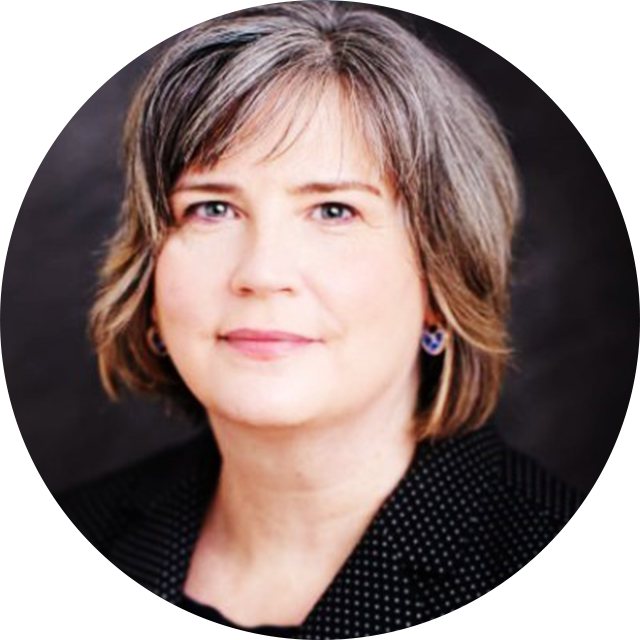
Mary Neaton
Brunswick Boat Group
Mary Neaton has over 25 years of strategic leadership and business development expertise in the automotive and consulting sectors. She most recently served as head of strategy for the Brunswick Boat Group. Prior to this, Mary held the position of vice president of ZF's Brake Control Portfolio. Throughout her career, Mary has held key leadership roles focusing on product strategy, technology commercialization, and strategic business development at ZF North America, Johnson Controls International, and DaimlerChrysler Corporation. She also has extensive strategy and consulting experience at PwC Strategy&, A.T. Kearney, and AVL North America. Mary holds a Bachelor of Science in mechanical engineering from Michigan Technological University, a Master of Science in marine science from the University of North Carolina, and a Master of Business Administration from the University of Michigan Ross School of Business.
Select a Web Site
Choose a web site to get translated content where available and see local events and offers. Based on your location, we recommend that you select: .
You can also select a web site from the following list
How to Get Best Site Performance
Select the China site (in Chinese or English) for best site performance. Other MathWorks country sites are not optimized for visits from your location.
Americas
- América Latina (Español)
- Canada (English)
- United States (English)
Europe
- Belgium (English)
- Denmark (English)
- Deutschland (Deutsch)
- España (Español)
- Finland (English)
- France (Français)
- Ireland (English)
- Italia (Italiano)
- Luxembourg (English)
- Netherlands (English)
- Norway (English)
- Österreich (Deutsch)
- Portugal (English)
- Sweden (English)
- Switzerland
- United Kingdom (English)

















